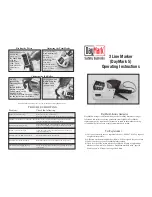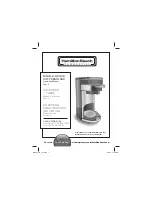
12
26
27
INSERT
4. All components of the lid
are dishwasher safe, plac-
ing them in the top bas-
ket. If you do not have a
dishwasher, wash by hand
as described in the note at
the end of the section.
5. Make sure there are no
milk residues on the hol-
low and groove under the
dial (fig. 27): if necessary,
scrape the groove with a
toothpick;
6. Rinse inside the froth adjustment dial seat with running
water (fig. 28);
7. Check that the intake tube and spout are not clogged with
milk residues;
8. Reassemble all the lid components;
9. Carefully wash and rinse the milk container (D8) ;
10. Attach the lid back on the milk container.
Please note: washing by hand
Washing the lid in a dishwasher guarantees the perfect hygiene
of all the components. When washing by hand, wash all compo-
nents of the milk container lid thoroughly with hot water and
immerse them in a basin of hot water for 30 minutes before pro-
ceeding as described in point (5).
5.12 Other cleaning operations
1. Do not use solvents or abrasive detergents to clean the cof-
fee maker. Use a soft damp cloth only;
2. Clean the portafilter;
3. You are recommended to use De’Longhi detergent.
28
6. WATER HARDNESS
6.1 Water hardness
The descale light (B8) comes on after a period of time es-
tablished according to water hardness. The machine can also
be programmed according to the actual hardness of the water
supply in the various regions, in which case descaling may be
required less frequently.
Proceed as follows:
1. Remove the “TOTAL HARDNESS TEST” indicator paper (C4)
from its pack.
2. Immerse the paper completely in a glass of water for one
second.
3. Remove the paper from the water and shake lightly. After
about a minute, 1, 2, 3, or 4 red squares form, depending
on the hardness of the water. Each square corresponds to
one level.
Total Hardness Test result
Button
Level
1
soft water
2
medium
water
3
hard or
very hard
water
4. Set the appliance as indicated in section “3. Menù settings”.


































